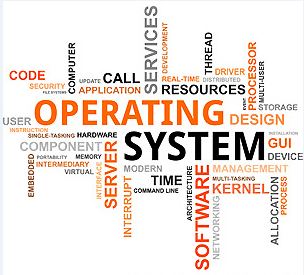RTOS Supporting Hardware Elements on MCUs
MCUs are used to control real time functions within an embedded system that requires periodic intervals to adhere to set system reliability, responsiveness and performance requirements. Other times, real time operating systems are utilized in management of real time MCU events in a bid to ensure utmost responsiveness in real time.
As control systems become more complex, real-time control approaches for managing different MCU functions within their stipulated response time must be utilized. When using a real-time operating system, each task is assigned a portion of the MCU processing cycle such that; tasks can turn over their allotted time to other tasks when not in use to ensure that the precious processing cycle is utilized to the latter. When no task requires servicing, an idle low power mode is initiated. This explains why modern MCUs are optimized to facilitate RTOS implementations through inclusion of dedicated timers and intelligent peripherals.
However, not all MCUs are ideal to hold an RTOS. Therefore, a few hardware capabilities must be considered to ensure that a particular MCU meets the real time embedded system design requirements. They include;
Advanced interrupt controllers
An advanced interrupt system is an important hardware element in all MCU based designs that must respond to real-time events efficiently and quickly. For instance, real-time response can be compromised when the interrupt requires numerous cycles to respond. MCUs with advanced interrupt controllers also offer other features necessary for implementing MCU based RTOS. The controllers connect all timers, input signals and peripherals to guarantee comprehensive interrupt support. Advanced interrupt controllers support different priority levels making it easy to determine most important and least important events.
Memory footprint and lower power
Since RTOS processes require special SRAM control blocks to store different process information, engineers may be concerned about lacking enough SRAM and subsequently, memory for their applications. Fortunately, RTOS memory footprints are constantly improved as control block sizes and context switching times are optimized. MCUs also include more SRAM on devices because the resource is becoming affordable and more valuable. Lower power modes are required because they facilitate utilization of reduced internal regulation voltage, clock speeds and disabling of clocking to particular peripherals.
Efficient DSP applications processing
Real-time Operating System is used in different DSP applications to ensure that processing is done efficiently. In DSP applications, efficiency can be compromised when multiple communicationchannels are competing for CPU cycles. Using an RTOS allows easy management of communication functions in order to limit the required number of CPU cycles and free up processing time.
Summary
In most cases, embedded systems are required to respond to events within specified durations. This makes an RTOS hosted on an MCU the ideal solution. Hence, the requirement for hosting an RTOS on an MCU must be adhered to. Also, the ideal MCU must be selected to ease the development of the subsequent RTOS based design.
